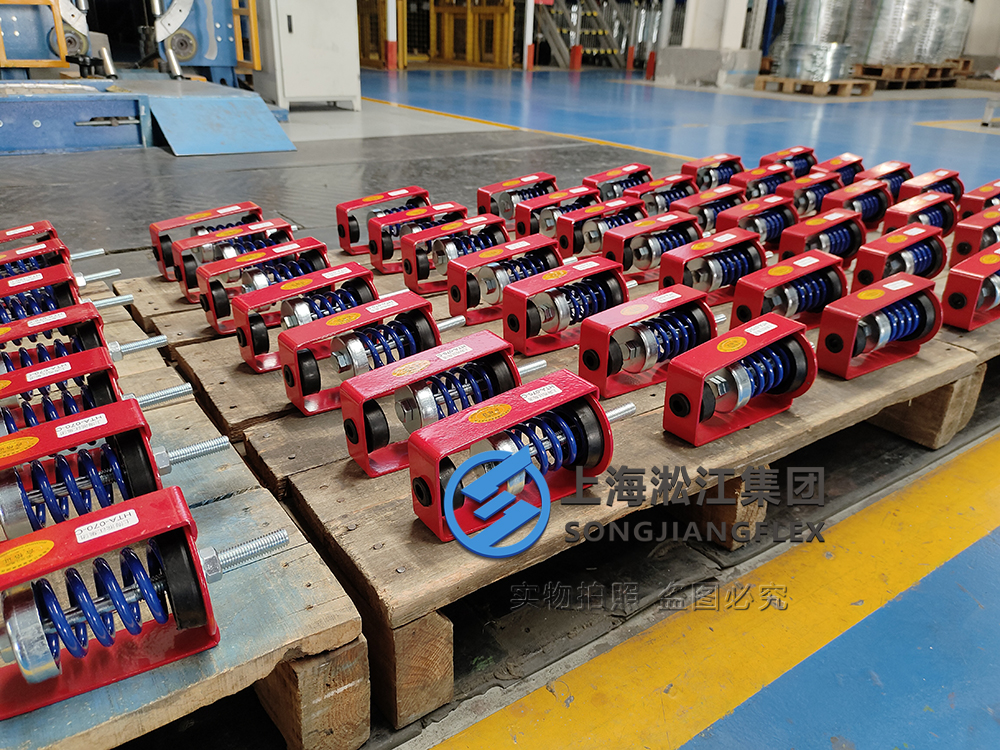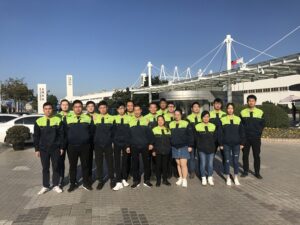Where Are Spring Hanger Vibration Isolators Used?
Noisy ceilings, shaky ducts? You might be missing one key solution—spring hanger vibration isolators.
Spring hanger vibration isolators are specially designed devices used to suspend mechanical equipment while minimizing vibration and noise. These isolators are ideal for HVAC systems, ductwork, and piping in commercial and industrial buildings.
Let’s explore where and how they truly shine in real-world applications.
What are spring hanger vibration isolators?
Spring hanger vibration isolators are suspension devices combining a steel spring and sometimes rubber elements to absorb and isolate vibrations from suspended mechanical systems. Also referred to as hanger spring isolators, they are a type of vibration spring engineered to reduce structure-borne noise and oscillations in buildings.
These isolators are commonly used where equipment is hung from ceilings or beams, such as air handling units or piping.
The internal spring is rated for specific loads and deflection, ensuring that the isolator performs effectively within its range. Some advanced models include neoprene cups or noise barriers to improve acoustic performance further.
Where are spring hanger vibration isolators commonly installed?
You’ll find spring hanger vibration isolators in commercial buildings, hospitals, theaters, and any space with suspended HVAC systems. They’re often applied during spring hanger installation for equipment like ducts, exhaust pipes, and pumps.
When rigidly installed ducts or pipes vibrate, the entire ceiling can become a noise transmitter. These isolators decouple the vibrating system from the building structure.
In retrofits, they can be integrated without major structural modifications, making them a go-to solution for both new and old installations.
Why are they preferred in suspended mechanical systems?
Suspended mechanical systems present a unique challenge—gravity and vibration act together. Vibration isolators reduce these oscillations and prevent mechanical noise from transferring to the structure above.
Compared to rigid hangers, vibration isolation devices like spring hangers flexibly adapt to equipment movement, thermal expansion, and fluctuating operating loads.
In high-end projects such as concert halls and labs, these isolators are often a specification requirement due to their effectiveness.
How do they benefit HVAC systems?
Spring hanger isolators dramatically improve HVAC system performance by eliminating buzzing, rattling, and low-frequency noise transmission. Their use is particularly effective when installed at fan coil units, duct elbows, and piping junctions.
They act as vibration isolator mounts that support the weight of the system while cutting off vibrational pathways to the ceiling or beams.
This contributes to energy efficiency, reduced wear, and improved user comfort in both commercial and residential settings.
What is the purpose of vibration isolation?
Vibration isolation’s main purpose is to protect structures and equipment from continuous vibratory energy, which can cause material fatigue, noise, and mechanical failure over time.
Using devices like vibration isolators, engineers ensure that machines operate longer, more quietly, and with greater precision—especially in sensitive environments like hospitals or data centers.
It also enhances safety by preventing unintended resonance or detachment from connections.
What are the applications of vibration isolation?
Vibration isolation is used across industries—from HVAC and electrical to aerospace and manufacturing. For example, in pump stations, engineers often use vibration isolator pump systems to prevent damage to piping due to startup surges.
In marine applications, isolators ensure equipment stability on moving vessels. In power generation, isolators are key to maintaining turbine alignment.
These isolators play a crucial role wherever sensitive machinery and noise-sensitive environments intersect.
What do you use a vibration sensor for?
A vibration sensor is used to monitor equipment condition and detect anomalies caused by imbalance, misalignment, or component wear. These sensors help determine whether vibration isolators are functioning properly or if replacement is needed.
In smart maintenance strategies, sensors allow real-time vibration analysis, helping prevent costly breakdowns.
They also ensure that your vibration isolation strategy remains effective over time.
What is an example of vibration isolation?
A real-world example: A luxury hotel in Dubai installed spring hanger isolators above its ballroom HVAC system. The result? No noise leaks into the guest floors, despite the system operating continuously.
By supporting ductwork with vibration spring systems, noise was reduced by over 50%, while airflow remained unaffected.
This showcases how engineering controls can blend comfort with performance.
What is a real life application of vibration?
In daily life, vibration appears in places like metro stations, gyms, and auditoriums. Without vibration isolation, sound and motion from one room can easily bleed into another.
For example, fitness centers use vibration-dampened platforms to minimize the impact of running machines and weights on neighboring businesses.
Understanding and controlling vibration is now a standard part of architectural design and equipment selection.
Where are vibration dampers used?
Vibration dampers are often used alongside isolators to absorb residual energy. They’re found in bridges, elevators, building curtain walls, and even wind turbine blades.
While vibration isolators control the source of vibration, dampers deal with energy that has already entered the system.
Combining both ensures an optimal balance between flexibility and control.
Can they be customized for specific applications?
Yes. At airspringo, we manufacture custom vibration isolators, including designs for aerospace environments like vibration isolator aircraft systems, where low weight and precise control are critical.
We also create solutions for heavy-duty equipment and special installations, such as rooftop generators or isolated studio rooms.
Each vibration isolation solution is tailored to your load, frequency, and space requirements.
Summary
Spring hanger isolators are essential for noise and vibration control across diverse industries.






